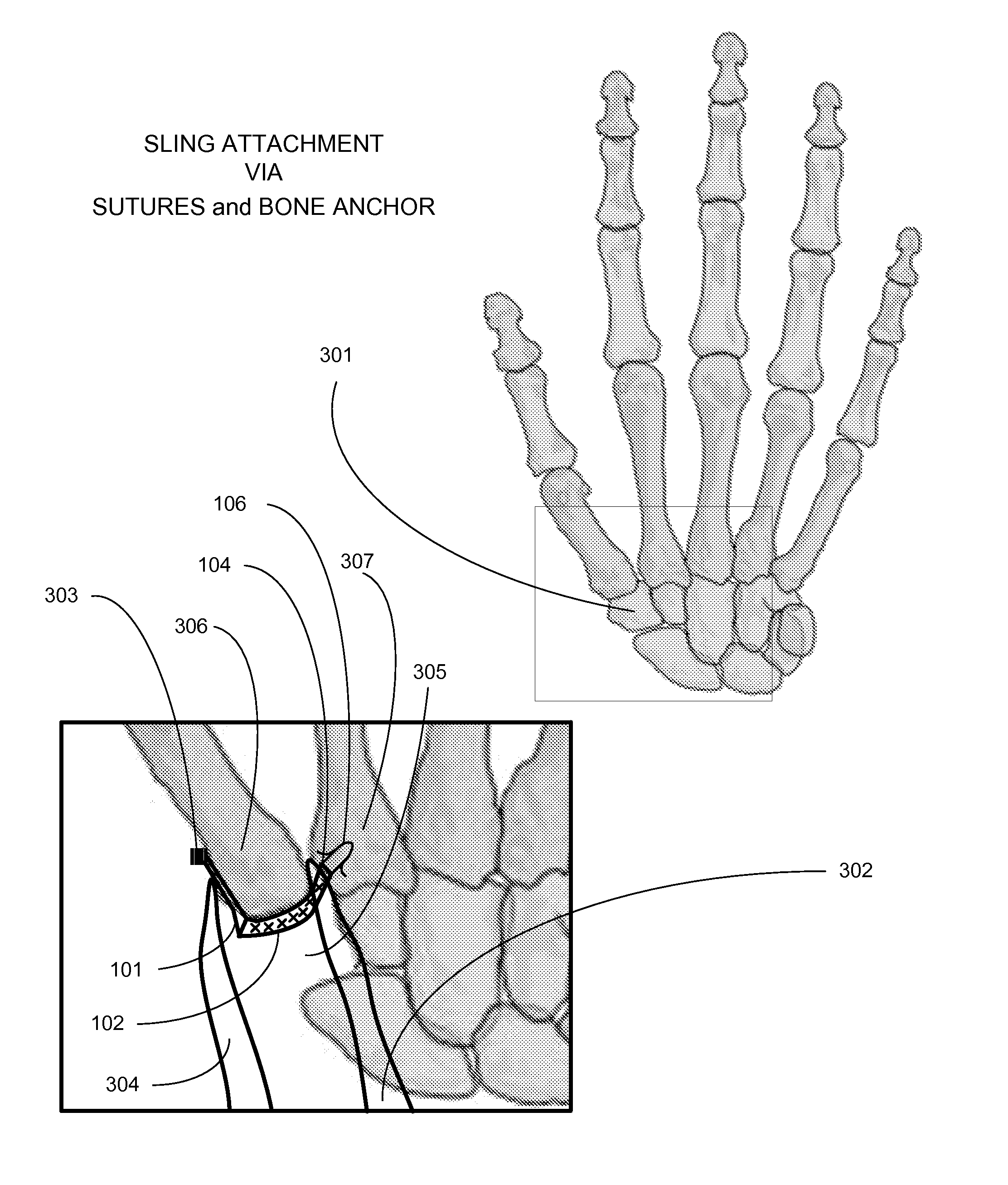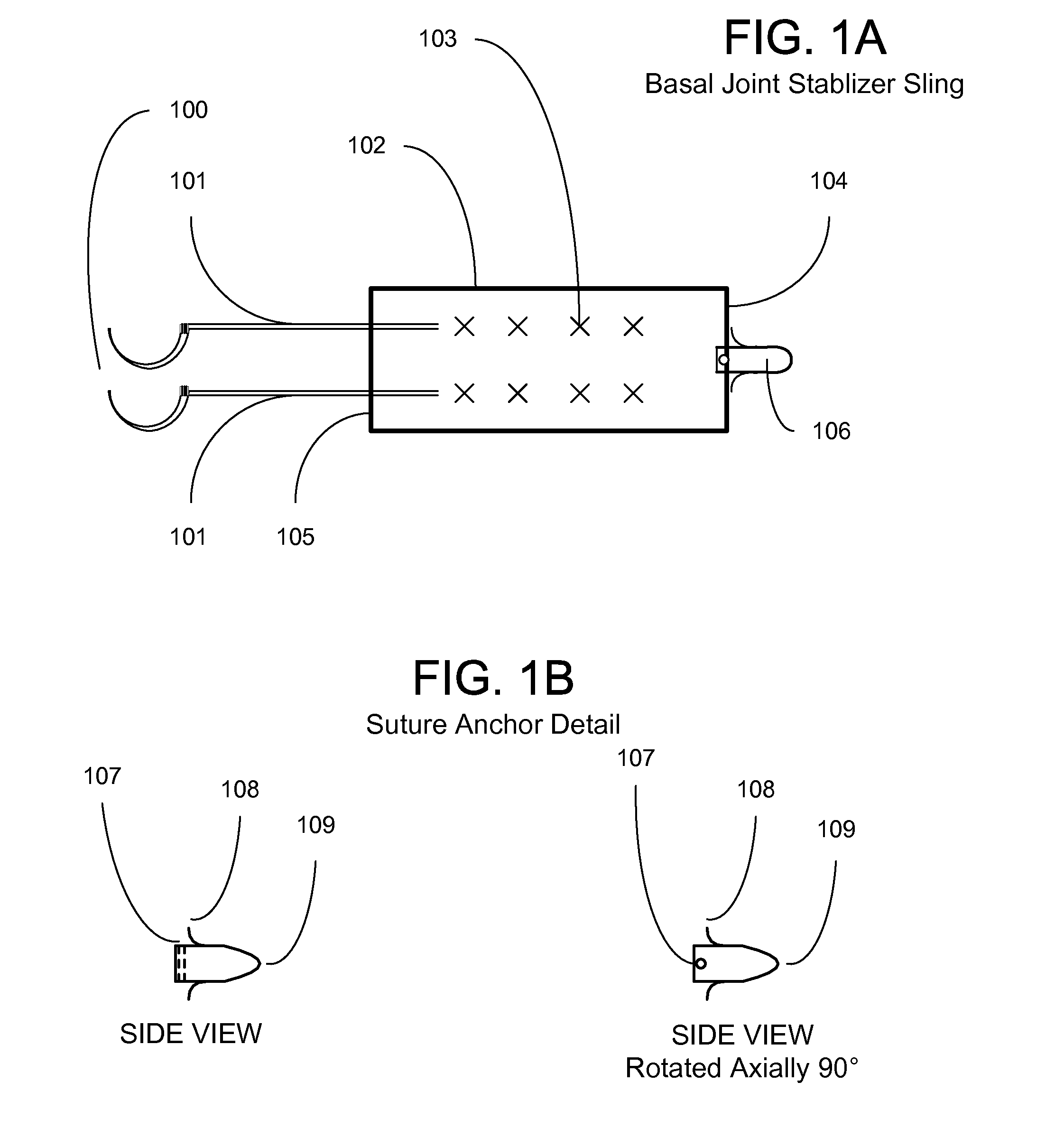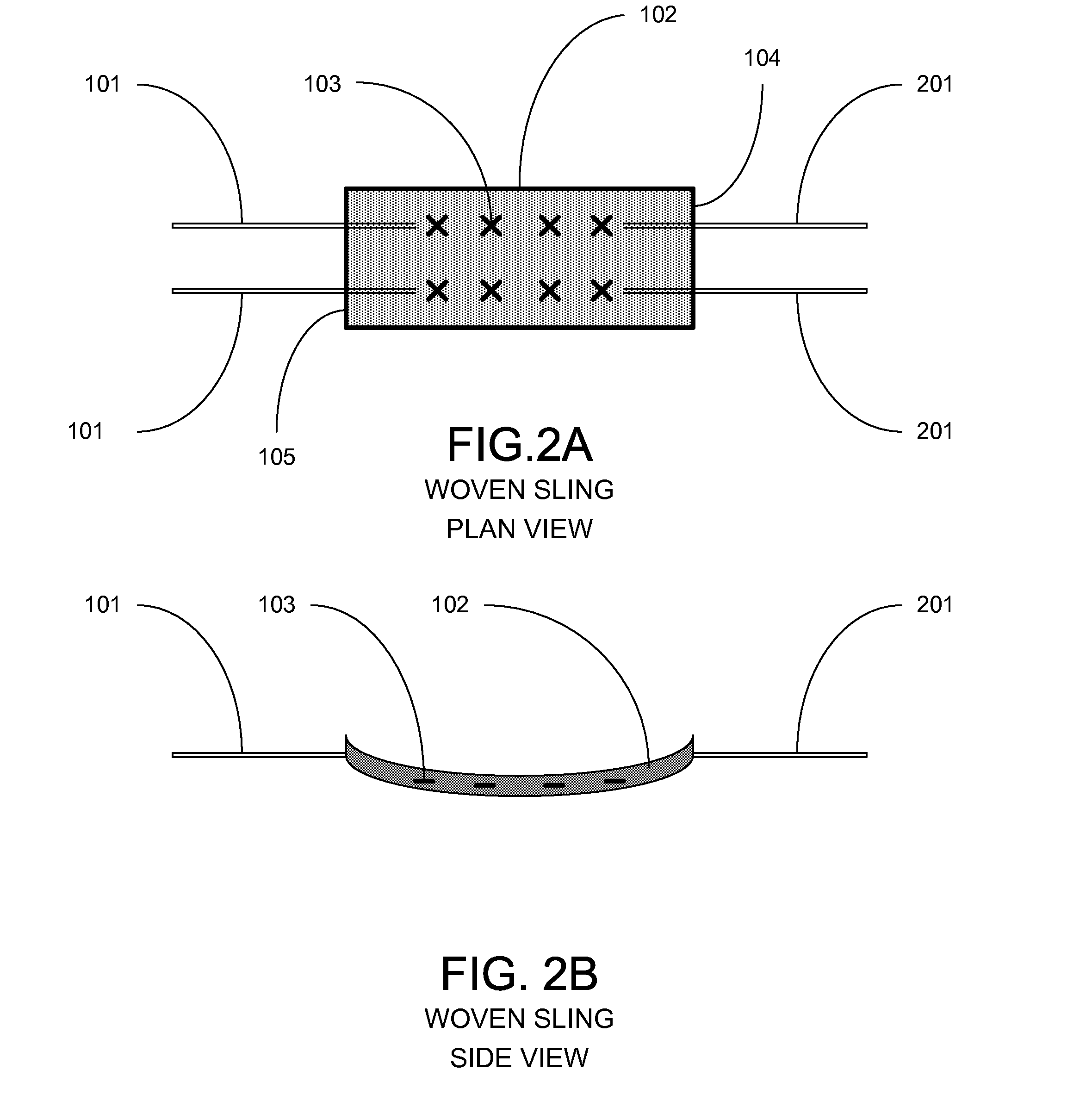Surgical implantable stabilizer sling for basal joint arthroplasty
a stabilizer and basal joint technology, applied in the field of implantable stabilizer slings, can solve the problems of proximal migration, pain, and pain of compensatory metacarpal-phalangeal joints, and achieve the effects of reducing pain, reducing proximal migration, and reducing invasiveness
- Summary
- Abstract
- Description
- Claims
- Application Information
AI Technical Summary
Benefits of technology
Problems solved by technology
Method used
Image
Examples
Embodiment Construction
[0050]The techniques and apparatus disclosed herein enables surgeons to treat basal joint arthritis with a reconstructive method that allows for simplicity, ease of performance, more predictable outcome among surgeons of varied backgrounds, training and ability, shorter operative time, lower surgical site morbidity, smaller incision, no need for harvesting and sacrificing of functioning tendons, no pin fixation, faster recovery, and earlier return to activities of daily living.
[0051]This technique and implant design will provide a simpler, less invasive method for basal joint reconstruction with less donor site morbidity, earlier institution of motion post-operatively, faster healing time and resumption of normal activities, and none of the complications that are uniquely associated with other techniques.
[0052]The benefits of these concepts are enhanced by meeting the goals of basal joint reconstruction which include removal of the entire arthritic interface, particularly important ...
PUM
 Login to View More
Login to View More Abstract
Description
Claims
Application Information
 Login to View More
Login to View More - R&D
- Intellectual Property
- Life Sciences
- Materials
- Tech Scout
- Unparalleled Data Quality
- Higher Quality Content
- 60% Fewer Hallucinations
Browse by: Latest US Patents, China's latest patents, Technical Efficacy Thesaurus, Application Domain, Technology Topic, Popular Technical Reports.
© 2025 PatSnap. All rights reserved.Legal|Privacy policy|Modern Slavery Act Transparency Statement|Sitemap|About US| Contact US: help@patsnap.com



